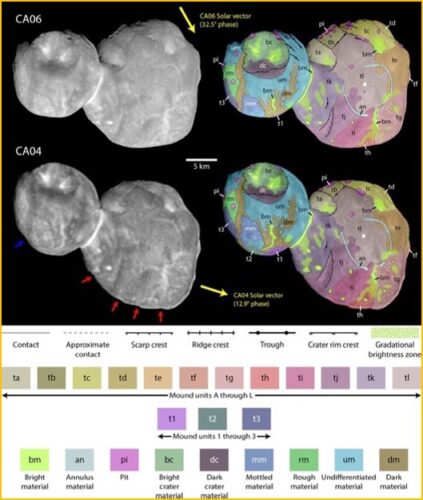
The mounds on asteroid Arrokoth offer clues to the mechanisms of formation of the rocky bodies
An article published in the journal “The Planetary Science Journal” reports a study on the mound-like formations found on asteroid Arrokoth by NASA’s New Horizons space probe. The images collected show that especially the largest lobe, which was named Wenu, is dominated by these geological features but the smaller lobe, which was named Weeyo, has some of them as well. A team of researchers led by Alan Stern conducted simulations that indicate that these are the traces of smaller bodies that coalesced in the very early history of the solar system. This offers new insights into the formation mechanisms not only of asteroids but also of larger rocky bodies.


